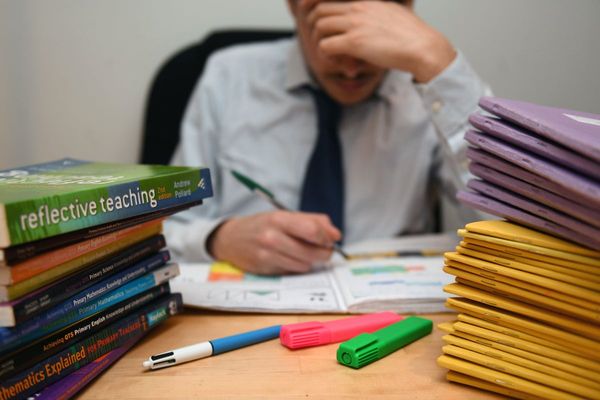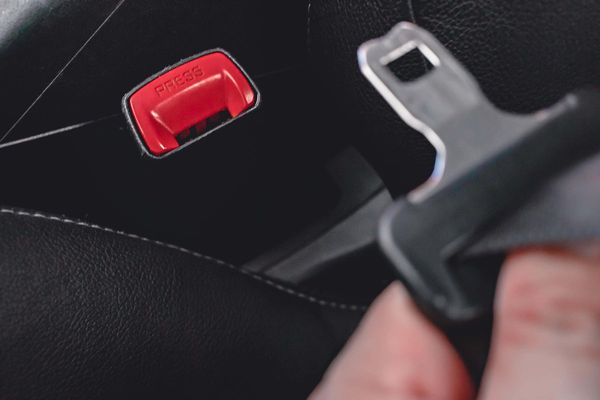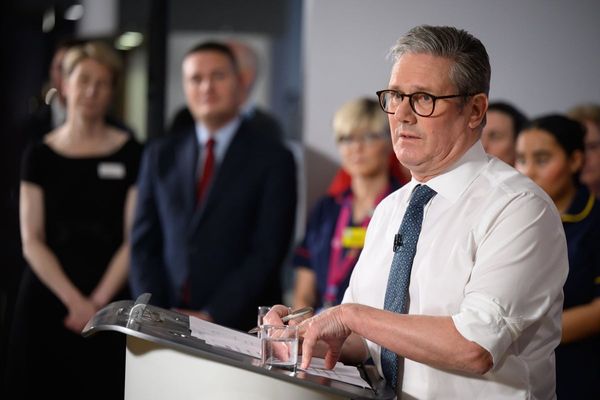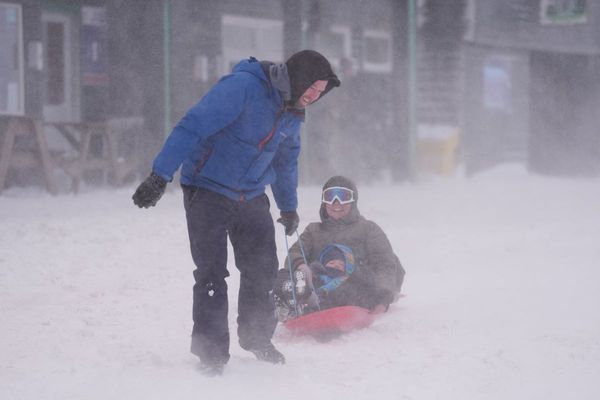Not far from the busy Point Cook Road in Melbourne's outer south-west is Alamanda K-9 College, one of the biggest single-campus schools in Victoria.
It has roughly 3,300 students.
It means staggered drop-off and pick-up times to avoid traffic congestion at the school gates, a fresh batch of newly installed portable classrooms and a staggered timetable so students can share the limited outdoor space.
Meron Tabor, who has two children at the school, said academically the school was fantastic, but the large number of students was a concern.
"Because of the crowding and the capacity, the kids have not enough room to play," she said.
She said school pick-up times got "pretty crazy", with long queues of parents and crowded gates, despite the staggered bell times.
"There are lots of cars in all the streets," she said.
Wyndham City Council Mayor Susan McIntyre has lived in Point Cook since 2011, and remembers when Alamanda opened in 2013 with 371 students.
Just nine years later, she said the school was hoping to secure funding for a multi-storey building — the sort of school buildings you might see in central Melbourne, rather than in the outer suburbs.
She said the school was illustrative of the speed of population growth in Wyndham, and services struggling to keep up.
"It has a fantastic reputation, but it does have those issues of being so popular," she said.
She said the population growth in Point Cook — an increase of about 25 per cent since 2016 — was putting pressure on schools, as well as other infrastructure like transport.
"More than half our households are families with young children," she said.
It is an issue across Wyndham, with data from the council showing the average school size in the area is 983 students, compared to 554 students across greater Melbourne.
"By 2041 we will be 16 sites short," she said.
Local infrastructure a key election issue
A survey of 200 Point Cook residents found local education and jobs were the top priorities for the state election, with nearly 60 per cent of locals who work leaving the area to travel to their job.
Every local resident the ABC spoke to mentioned the notoriously clogged Point Cook Road. Both major parties have made pledges to improve the thoroughfare, which connects the suburb to the Princes Freeway at Laverton, and upgrade other local roads.
Better connected public transport and health services were also important, with many locals calling out the lack of regular bus services.
Point Cook Action Group treasurer, Senthill Sundaram, said people in Point Cook represented 146 countries, and locals also wanted local venues to celebrate culture.
"We are the most diverse postcode in Australia, and we need a place for people to come together," he said.
It is also one of the most educated areas – 2021 census data shows 41.1 per cent of Point Cook residents aged over 15 had studied to Bachelor Degree level or higher, compared to 29.2 per cent of all Victorians.
Election heating up in the outer west
The outer west has been traditional Labor territory, but many campaigners and researchers expect the Labor vote to drop at this election, due to a perception voters in those areas have been "neglected".
Melton is considered the most likely to fall to an independent, but there are also local independents running in Point Cook and Werribee, and the Liberal party has made plenty of local announcements in the west.
Point Cook is held by Labor on a 12.8 per cent margin, but the sitting MP Jill Hennessy is retiring, after representing the electorate under its former name of Altona since 2010.
Local GP Joe Garra, who finished second to Labor for the seat of Werribee in the 2018 election, is running as an independent against Labor's Mathew Hilakari.
The Liberal candidate is schoolteacher Angela Newhouse.
Both major parties have made promises to help fund education, including in key electorates in the outer suburbs, in this state election.
The Coalition has unveiled more than $1.5 billion in school pledges, including $700 million for non government schools.
Labor's pledges include more than $2.7 billion across education, including for kindergarten, and 25 new schools.







